Category: General

EV market share fell in Q1, in a dearth of affordable models
U.S. EV and hybrid sales fell in the first quarter of the year, according to a Tuesday update from the Department of Energy’s Energy Information Administration (EIA).
Sales of battery electric vehicles (full EVs) dropped to 7.0% of overall light vehicle sales in the first quarter of 2024 from 8.1% in the previous quarter. Nationally, sales of hybrids, plug-in hybrids, and EVs combined dropped to 18.0% of the market, versus 18.8% in the previous quarter.
As the EIA reports—in a trend that parallels a California EV trend for the quarter—EV sales by actual volume were actually up 7% in the first quarter of 2024 versus the same quarter in 2023. But to add another splash of context, that was after 13 consecutive quarters of double-digit percentage gains.
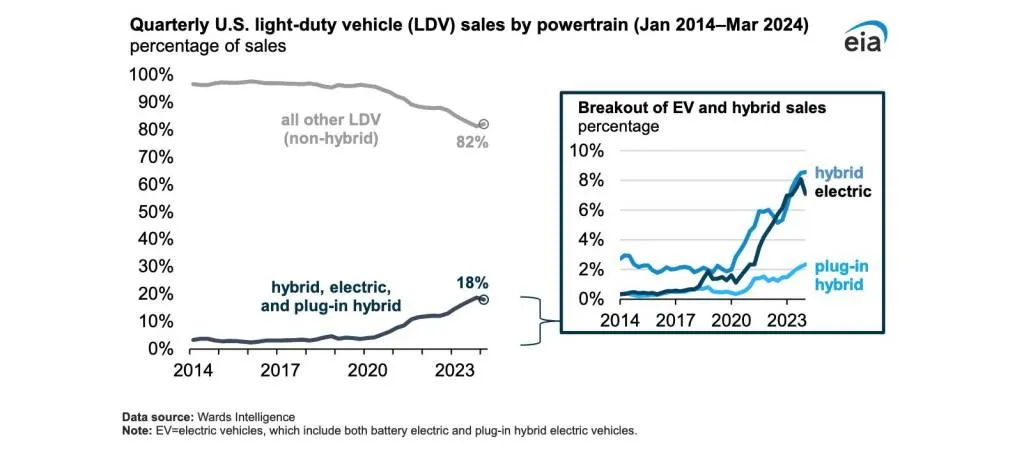
EIA update on EV and hybrid sales – May 2024
Multiple factors may be at play. Mass-market EV sales were way down, by 17.9%, and that appears to be related more to what’s available in the market than to demand. For instance, the Chevrolet Bolt EV was out of production in Q1 and disappearing from dealer lots, while GM’s next-most-affordable Chevy Equinox EV hasn’t yet arrived; and Nissan has slimmed down the Nissan Leaf lineup to just two trims.

2023 Nissan Leaf
On a transaction basis, the EIA pointed to Cox Automotive data suggesting that EV transaction prices remain about $6,900 higher than the average vehicle price across the entire market. The number of vehicles eligible for the $7,500 EV tax credit that can make up for some or all of that difference is more limited than it was last year.
Meanwhile, there was a decline in the whole light-duty vehicle market, led by a sag in luxury-vehicle sales, at a time when eight out of 10 EV sales are luxury models. Luxury sales reached 18% of the new-vehicle market in 2023, but in Q1 they dropped to 16%. It’s a trend that’s difficult to extricate from the perfect storm of high interest rates and high sticker prices, after several years of nearly across-the-board price hikes. The agency notes that overall mass-market vehicle sales remain at about 10% below pre-pandemic levels, while the luxury sector bounced back two years ago.
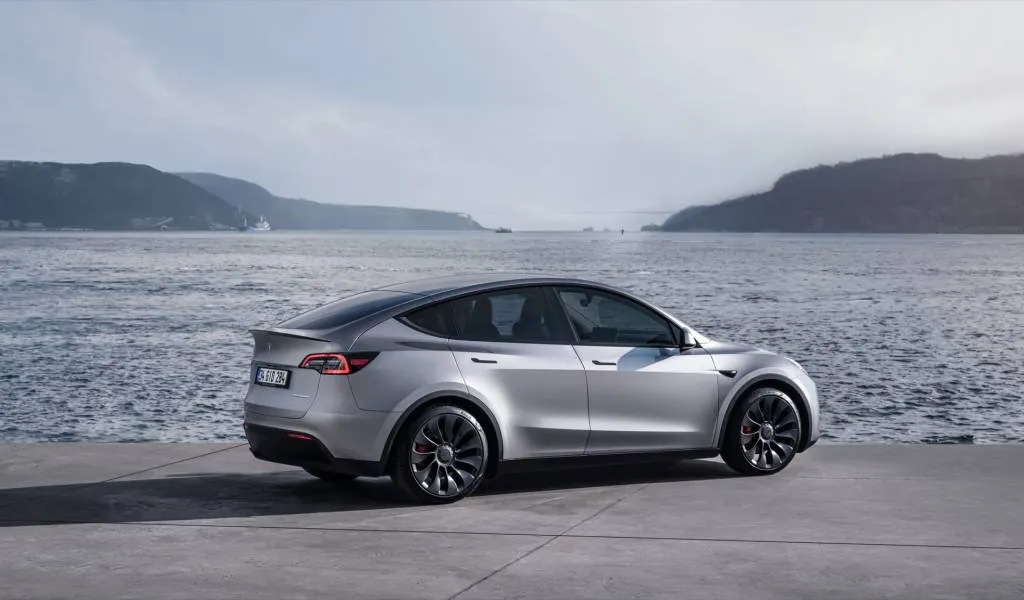
2024 Tesla Model Y. – Courtesy of Tesla, Inc.
Modest Tesla sales gains in the U.S. year-over-year for Q1—of about 4% according to Automotive News, based on registrations—weren’t enough to offset either of these factors. It should be noted that the EIA based these data trends on Ward’s Intelligence data, which also draws from registration data.
In the U.S., the vast majority of EVs have effectively been priced and positioned as premium offerings if not luxury vehicles. This isn’t the case in the rest of the world, and if automakers want to get serious about EV sales in the U.S.—and make EV sales gains—low-priced EVs are the way to go.

2025 Kia EV6 bows with bigger battery, styling updates
Kia this week revealed an updated version of its EV6 electric crossover for its home market of South Korea. The same changes are likely to be applied in the U.S. for the 2025 model year.
The biggest change is a new 84-kwh battery pack, replacing the 77.4-kwh pack that has been the largest available in the EV6 since its 2022-model-year launch. This may boost range by 10% or more—perhaps past the current peak of 303 EPA miles for the lineup to something potentially exceeding 330 miles.
The exterior gets a mild refresh. New headlights with a design Kia calls the Star Map are packaged with more subtle changes on other parts of the car, including a new graphic for the curved light bar of the taillights.

Updated Kia EV6 (Korean spec)
Inside, the EV6 features a new steering wheel and fingerprint authentication system. Kia added a digital rearview mirror and head-up display as well, and also made the B-pillars thicker to increase rigidity.
No powertrain changes are expected, meaning the lineup will include a single-motor rear-wheel drive powertrain rated at 225 hp and a dual-motor all-wheel drive option making 320 hp. Expect the sportier EV6 GT to return as well with 576 hp.
The EV6 is closely related to the Hyundai Ioniq 5, sharing that crossover’s E-GMP platform. It got off to a more solid start in the U.S. as Kia simply made it easier to buy the EV6—although now Hyundai has caught up on the dealership front.

Updated Kia EV6 (Korean spec)
U.S. pricing will be announced closer to the updated EV6’s launch in this market, timing for which has not been announced. Kia did lower the price a bit for 2024, which saw the return of the lower-cost EV6 Light Long Range.
Kia recently confirmed a May 23 debut for its smaller EV3—which, it appears, borrows some design details from both the EV6 and the larger EV9.

2025 Kia Sorento Hybrid, Subaru Crosstrek Hybrid, Biden tariff hikes: Today’s Car News
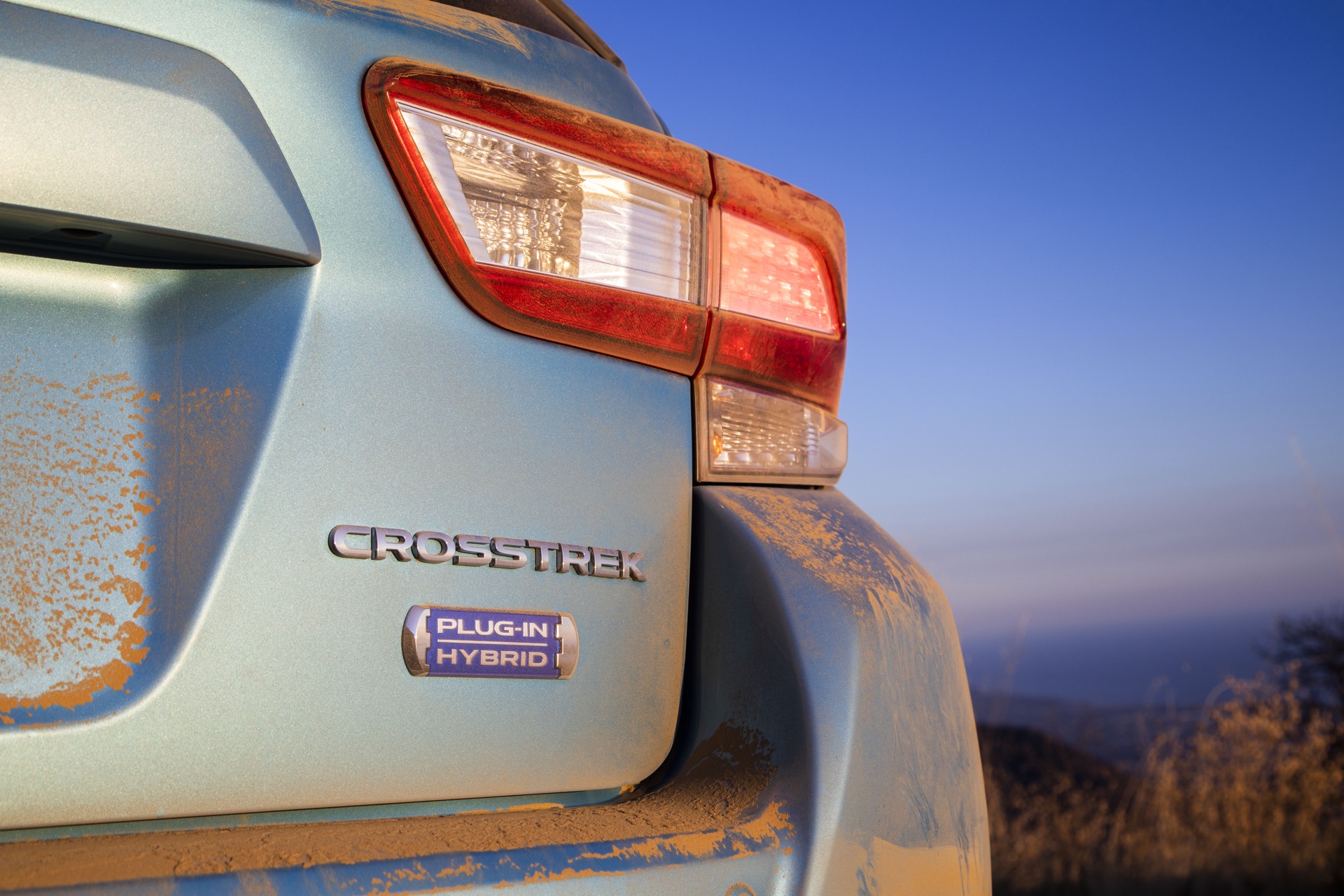
The Biden administration hikes tariffs on various goods from China, and it goes beyond just EVs and batteries. Kia refreshes its three-row hybrid SUV. And Subaru is looking to Toyota for more of its EVs. This and more, here at Green Car Reports.
In a first drive of Mercedes’ electric G-wagen, we found it to be a better, more precise off-roader than the gasoline model—outshining the combustion versions even before the EV’s party-trick zenith called G-Turn.
Subaru is bringing back the Crosstrek Hybrid, according to a report, and it will likely arrive soon after the upcoming 2026 Subaru Forester Hybrid. Meanwhile, it appears that three out of the four EVs that Subaru announced last year will be collaborations with Toyota.
The 2025 Kia Sorento Hybrid three-row SUV lineup earns up to 36 mpg, and it’s getting refreshed styling inside and out, without any price hike. Expect a similar update for the plug-in hybrid.
And the Biden administration effectively quadrupled the tariff on Chinese EVs, accompanying tariff hikes on EV batteries, solar cells, and critical minerals. It expands beyond just EVs, however, to steel and aluminum and semiconductors, but it omitted the language from challenger Donald Trump singling out imports from Mexico as an issue.
_________________________________

Biden hikes tariffs to keep Chinese EVs out
The Biden administration on Tuesday took a serious protectionist stance, revealing sweeping tariff hikes affecting $18 billion of Chinese imports, with electric vehicles and their supply chain at the core.
Specifically, tariffs on electric vehicles rise from 25% to 100% this year. The hikes aren’t just on finished EVs, but on critical elements of the supply chain. This year, the tariff rate on lithium-ion batteries and battery parts increases from 7.5% to 25% when applied to EVs, while an equivalent hike on lithium-ion batteries imported from China for other purposes will apply starting in 2026.
The move made clear that the idea of U.S. automakers, assembly plants, and auto workers competing on a “global marketplace” has been left to the history books—and that those holding out for a cheap $20,000 EV from China might want to look for a third-party Presidential candidate who’s on board with free trade.
The scope of the 100% tariff hike announced on EVs won’t at face value provide the same trade barrier as the 100% tariff on Mexico-built Chinese cars—EV or not—that former President and Presidential candidate Donald Trump proposed in March. But it goes after key aspects of the EV supply chain in ways that will affect new vehicles no matter what fuel they have.

UAW-made sticker on 2022 Chevy Bolt EV
Officially, up to today, cars imported from China are only subject to a 25% tariff, while those made with Chinese parts in Mexico would only be subject to a 2.5% tariff—so it is effectively a loophole that Chinese companies like BYD might be able to exploit to get a foothold in the U.S. market.
Ironically, U.S. automakers have nothing like the affordable EVs that Chinese companies might try to bring to the U.S. The Chevrolet Bolt EV had a sticker price well under $30,000 and was U.S.-made, fully qualifying for the EV tax credit, but GM discontinued it last year and a replacement model won’t arrive for another year.
Preempting an EV invasion already happening in Europe
As an example of the threat from China, the well funded, global automaker BYD, for instance, now sells the Dolphin EV, a well-rated compact hatchback, in some markets in Europe for the equivalent of about $30,000. BYD’s even lower-priced EV, the Seagull, might be able to meet U.S. requirements for $20,000 or less—but the new 100% tariff is surely a deterrent.
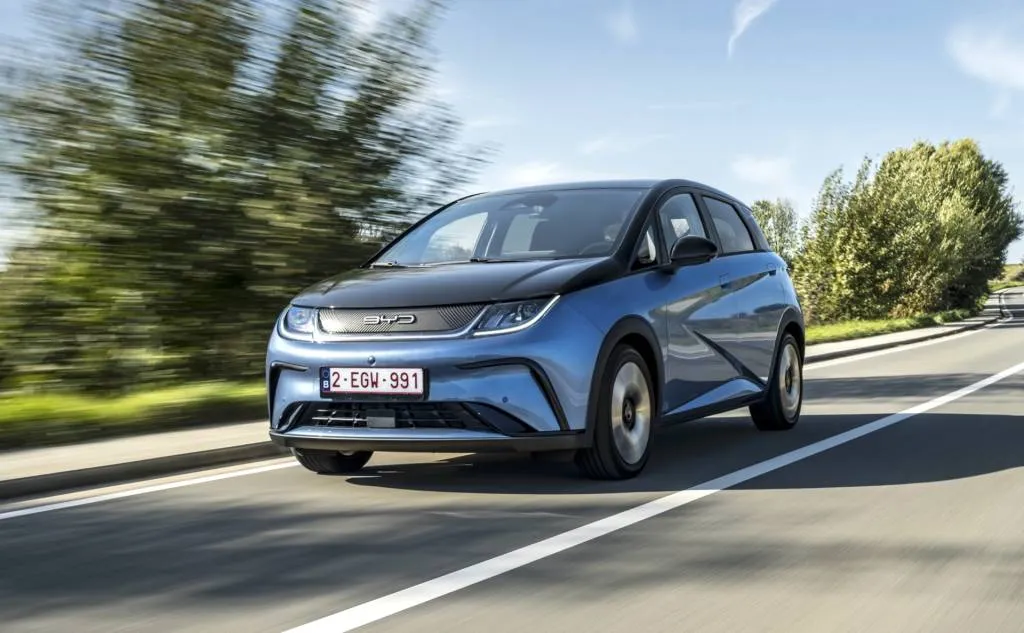
BYD Dolphin EV – Euro spec
The tariff hikes aren’t on everything, but they apply to “strategic sectors,” according to the Biden administration, that closely parallel the investments made by the administration. Beyond EVs and batteries, they include steel and aluminum, semiconductors, critical minerals, solar cells, cranes used at ports, and medical products.
China currently controls more than 80% of some aspects of the global EV battery supply chain, the administration says, which leaves national security at risk, among other concerns.
Electric or not, the Biden tariffs will prompt automakers to think twice about Chinese sourcing. Chinese steel and aluminum products will, for instance, get a 25% tariff this year, up from 7.5%, and semiconductors will get a 50% tariff in 2025, up from 25% today.
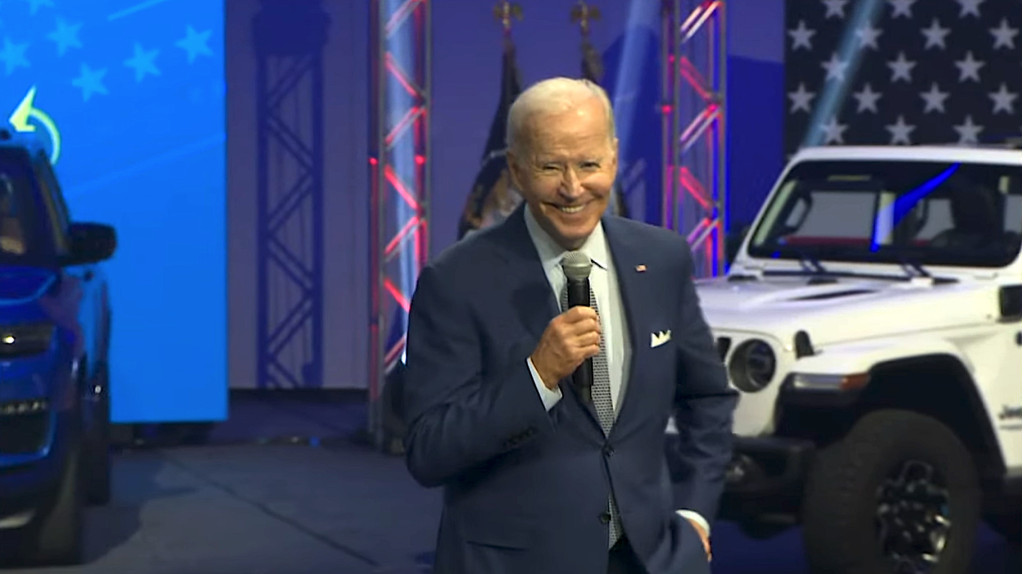
President Biden at 2022 Detroit Auto Show
“As President Biden says, American workers and businesses can outcompete anyone—as long as they have fair competition,” said the Biden administration, in an announcement of the sweeping tariff hikes. “But for too long, China’s government has used unfair, non-market practices.”
The administration then points to the technology transfers and intellectual property theft that have created “unacceptable risks to America’s supply chains and economic security,” noting that China’s current state of overcapacity could lead to export surges of low-priced vehicles that would harm American workers.
Earlier this month the Biden administration also released a revised set of regulations that would effectively allow automakers more time to cut China out of the EV supply chain without penalizing them on EV tax credit qualification in the meantime.

President Donald Trump (Photo courtesy Gage Skidmore/Wikimedia Commons)
The series of politically motivated squeezes of trade levers might not be over, though. Since this past weekend, seemingly in an effort to one-up Biden, Trump has promised a 200% tariff against China.
Mexico remains a potential loophole
What remains to be seen—and a key difference between potential administrations—might relate to what happens south of the border. According to the Wall Street Journal, in a query of U.S. Census Bureau data covering 2023 and 2024 through March, Mexico ranks third in electric vehicle imports to the U.S. after Germany and South Korea, while Japan and Belgium round out the top five. Imported EVs—including those from China—whether or not they comply with stricter EV tax credit sourcing requirements, still receive up to a $7,500 incentive when they’re leased.
Under the previous Trump administration, the U.S.-Mexico-Canada Agreement replaced NAFTA with stricter trade terms but effectively still allowed products to flow from Mexico tariff-free.
The Biden tariffs do little to assure that a Chinese internal combustion vehicle—even a hybrid, for instance—might not be assembled in Mexico and then shipped north. Beyond EVs, that may be a serious test of trade rules, and the industry, yet to come.

Review: 2025 Mercedes-Benz G-Class works on its quads (motors, that is)
It has four motors, 579 hp, and an off-road heritage that goes back further than the Rivian R1S, GMC Hummer EV, and Tesla Cybertruck. With the electric version of its military-grade G-Class, Mercedes-Benz promises even more freedom from pavement than all those American-built flagwavers, and it does it all with batteries.
And it’s a sort of bellwether for a brand that had committed to going fully electric, but now says it will sell ICE vehicles into the next decade. The electric G-Class didn’t have to happen, based on the latest thinking—but it does, and it could nail Mercedes’ argument that electrification suits every kind of vehicle.
“If the G can go electric,” Mercedes marketing vice president Bettina Fetzer told Green Car Reports and other journalists in late April prior to our drive, “any car can go electric.”
Going electric doesn’t just bring the G-Class up to date. It makes the G-Wagen a better off-roader, as I experienced during our first test drive of the G 580 with EQ Technology in southwestern France, just a couple of weeks ago. The electric G’s not just capable, it’s in many ways the most capable G-Class of them all.
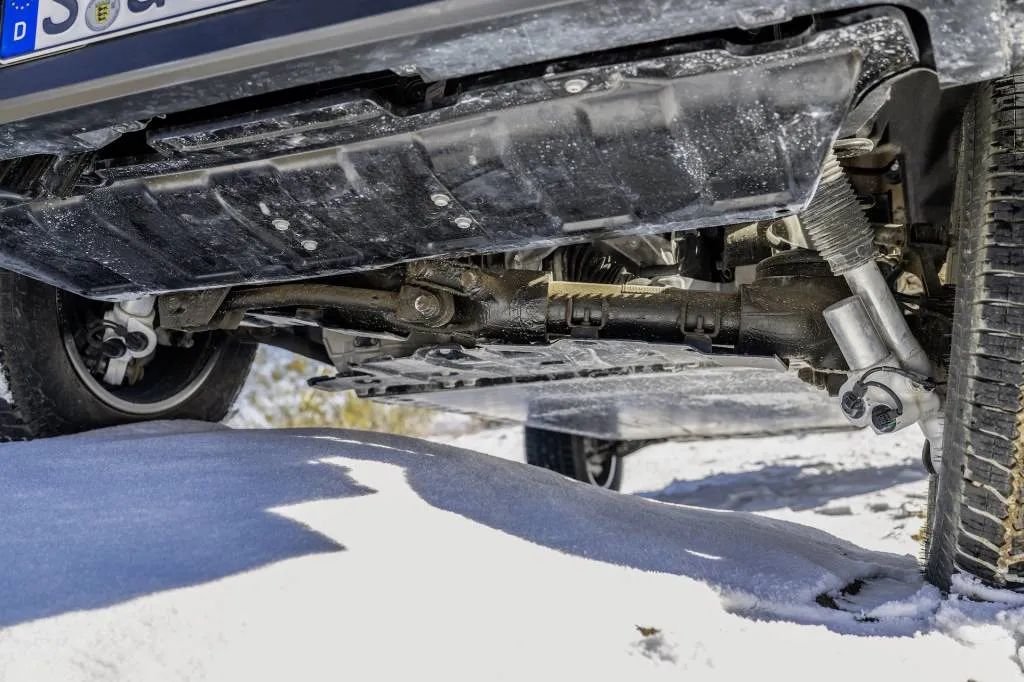
2025 Mercedes-Benz G 580 with EQ Technology
G-Class EQ: The floor is battery
The electric G sports its usual ladder-frame construction, but instead of an ICE under the hood, it rides atop a 116-kwh lithium-ion battery mounted in its floor. Housed in a flex-resistant case, the battery pack integrates with the frame and wears thick metal protection as a skid plate. The pack combines 216 cells into 12 modules in two layers, cooled with three circuits. There’s no mention of the silicon-anode battery chemistry that Mercedes has been keen to introduce to speed charging times.
With a quad-motor setup, each generating a maximum of 108 kw, the G 580 EQ nets out at 579 hp and 859 lb-ft of torque. Each motor has its own transmission, which enables a low-range mode for off-roading and relieves it of the need for its gas cousin’s three locking differentials. Mercedes promises a 0-62 mph time of 4.7 seconds and a top speed of 112 mph, while it fills the cockpit with G-Roar, a programmed set of sounds associated with drive modes or events. It’s more noticeable to outsiders than to anyone inside the plush leather-lined cockpit.
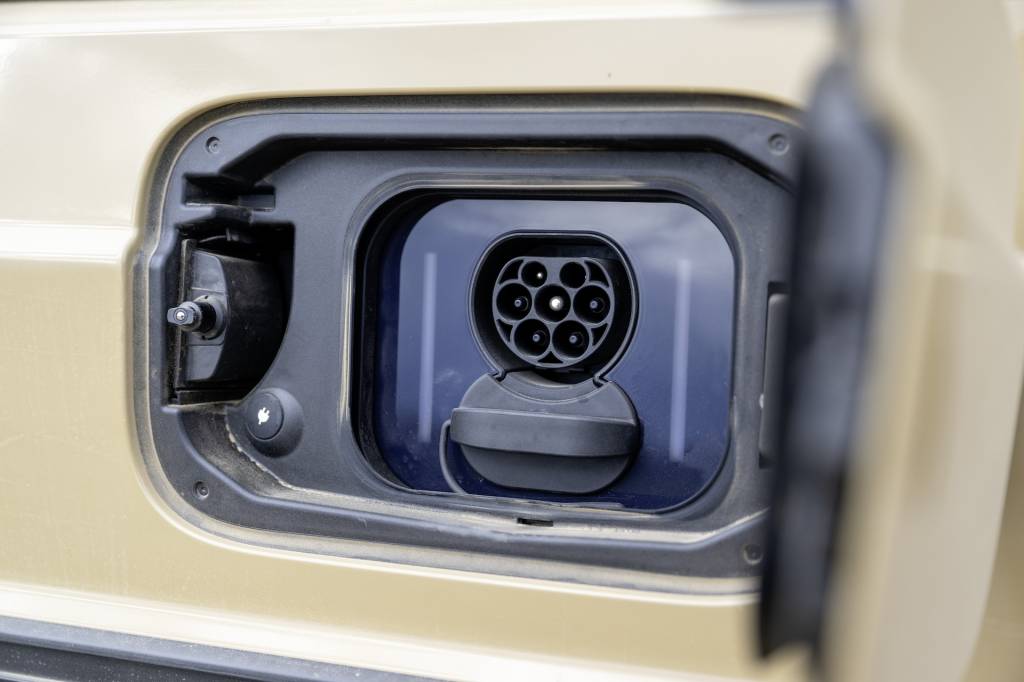
2025 Mercedes-Benz G 580 with EQ Technology electric SUV
An aerodynamic brick wall weighing 6,800 pounds never was going to do great in range testing, and it’s little surprise that the EPA estimates for the G 580 should land around 240 miles. It’ll come with a CCS charging port and soon adopt the NACS standard. WIth 200-kw charging, Mercedes quotes 20-80% charging in just over a half-hour. The company has only said it will study future off-road charging stations with its current partners, and it points out that off-roading itself offers plenty of opportunity to recharge through regeneration (a point which, while technically correct, seems starkly unaware of the G-Class’ role as urban showpiece in the U.S., at least).
That recuperation is governed by the G 580’s paddle controls. Auto mode chooses regen levels based on cornering angle, speed, and other data; D+ lets the front motor uncouple and the vehicle sail often for the best efficiency. Normal, D-, and D– dial up the regen, but the G 580 can’t stop itself by releasing the accelerator; it’s just shy of one-pedal capability, as I found on a bucolic street drive before putting the electric G-Class’s hardware to the dirt and mud test.
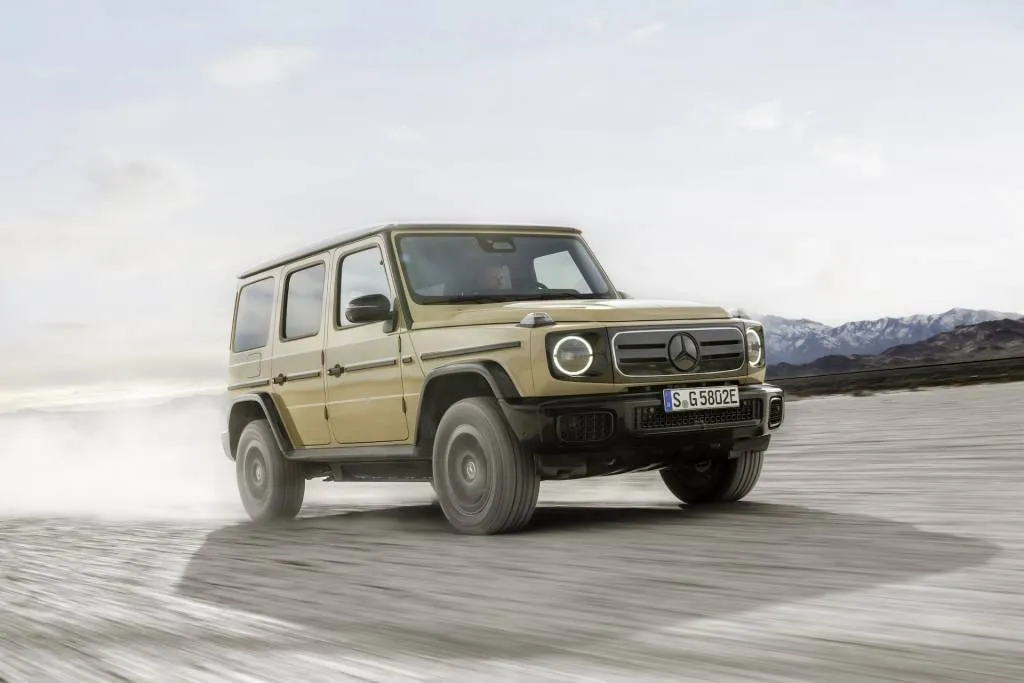
2025 Mercedes-Benz G 580 with EQ Technology
Electric G-Class: Good on pavement too
On a necklace of roads that circle prime off-road territory near Narbonne, France, I drove the reinvented G-Class and its barely revamped body. A bumper fairing here, a windshield header spoiler there, it hasn’t changed much outside in its transformation.
It has been modestly updated in its suspension, which combines front double-wishbone arms with a DeDion rear axle that’s needed to clear the rear motor. Its brakes remain hydraulic-assist, and the G-EV cruises on 265/60R18 tires. In its default drive modes it takes a very SUV-like 44.6 feet to make a U-turn.
The G 580 packs a hefty battery, which recenters its weight lower in the vehicle. It’s more stable as a result, and even without the electrohydraulic suspension now available on the gas-powered AMG model, its adaptive dampers perform backup while it mutes almost every road surface. The powertrain’s surge and its whuffling “G-Roar” synthetic sounds goaded me to go quicker constantly, but good damping aside, the G-Class doesn’t encourage that kind of driving.
It slows almost as well as it goes. It filters regen-braking settings through information about vehicle speed and cornering angle, then decides how much energy to redirect to the underfoot pack, in Auto mode at least. Through Normal, D-, and D– modes it adds more regen until it nears—but doesn’t provide—full one-pedal driving. Flipping its paddles for the opposite result, D+ eliminates almost all regen for a sailing mode.

2025 Mercedes-Benz G 580 with EQ Technology electric SUV
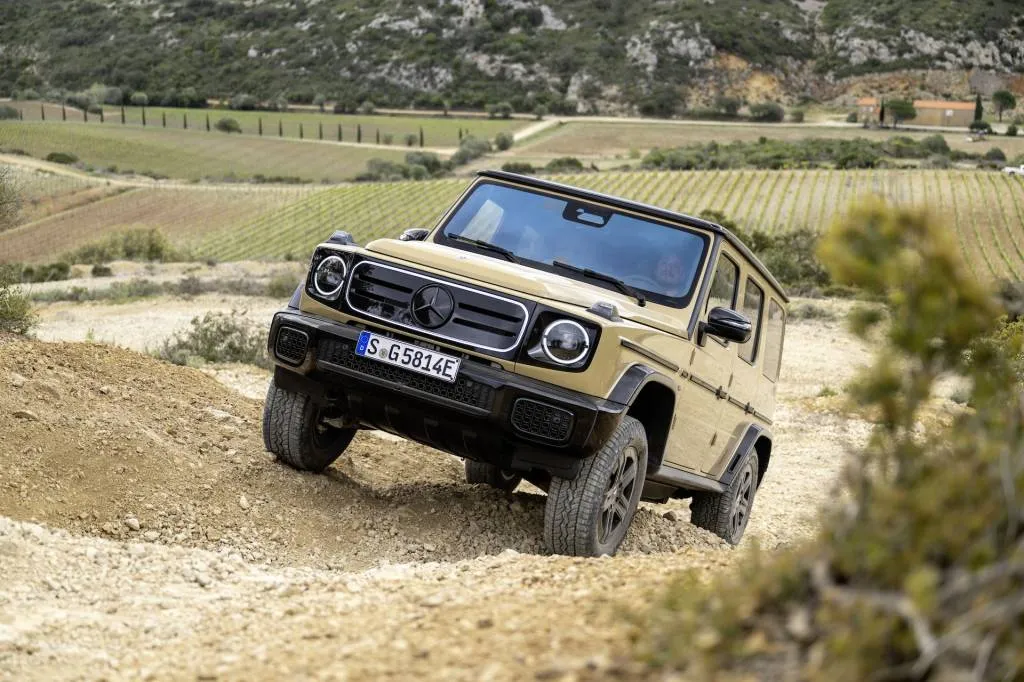
2025 Mercedes-Benz G 580 with EQ Technology electric SUV

2025 Mercedes-Benz G 580 with EQ Technology electric SUV
G 580 with EQ: Tough on dirt
But trails are where the G 580 shines most brightly. With the windows rolled down as I approached a dozen kilometers of rocky pitches, muddy trenches, and pure slop, the G 580 glided through a 2-foot-deep riverbed filled by recent rains, with only the sound of sloshing water to accompany the slog. It’s better for fording than the standard G-Class, at 33 inches of depth versus about 26 inches.
It bounds out of ruts better, too. With at least 9.8 inches of ground clearance, it’s up a few tenths on the gas G—and offers a competitive breakover angle of 20.3 degrees, an approach angle of 32 degrees, and a departure angle of 30.7 degrees. WIth its carbon-reinforced breastplate underneath, the G 580 bounded over outcrops with the blessing of my co-pilot. After all, it’d already been tested on the same mountain trails at the Schöckl as the standard G-Class.

2025 Mercedes-Benz G 580 with EQ Technology
If off-roading has become a much simpler pursuit now that we have electronically controlled locking differentials and all-terrain traction programs, the electric G-Class brings down even more knowledge barriers to safe, preservation-minded off-roading. Its off-road cruise control system engages carefully measured speed through low, variable, and fast crawl modes that let it pick through terrain safely at up to 5 mph, all through precise motor control. The vehicle can essentially be driven with steering and paddle controls, no locking diffs required. I met so few ruts and obstacles that generated any wheelspin—a combination of sophisticated motor control and well-chosen off-road tires—that the trail behind seemed nearly the same as when I encountered it.
Cycling into its specific Trail mode permits higher speeds, but Rock mode is where I spent most of my trail time. It engages Low mode, which deploys the transmission paired with each motor to reduce the gear ratio 2:1, and limit speed to about 53 mph.

2025 Mercedes-Benz G 580 with EQ Technology electric SUV
That mode also slips the G 580 EQ into two stunt-drive modes. G-Steering enables all-wheel steering that reduces turning radii on low-friction surfaces, which reduces the chance of ruining the trail for others when hairpins present themselves. Rivian’s similar Tank Turn feature was canceled due to environmental concerns, though the GMC Hummer EV and the related Sierra EV have a CrabWalk setup for diagonal driving. This one allows far more steering angle, and spun the G 580 around a narrow dirt path between a literal rock and a hard place, with zero drama. No gas-powered SUV can do this, thanks to geometry.
But it’s G-Turn that takes the electric platform’s potential to its ultimate party-trick zenith. In Rock and Low modes, steering wheel fully cranked and steering-column paddle pulled, all it takes is a full-on matted accelerator to spin the truck in two complete circles at a time, like a Bobcat with a brick on its gas pedal. Mercedes allows the function only on level low-friction surfaces, and guides drivers to do so only where it’s permitted and reasonable. Check all those boxes and you’ll never forget—as I haven’t—the feeling of being inside a leather-lined Speed Queen commercial dryer, minus the heat and noise. Sure, it’s a stunt. But it’s one that draws attention to the battery-electric version of the G while the ICE models get consigned to history.
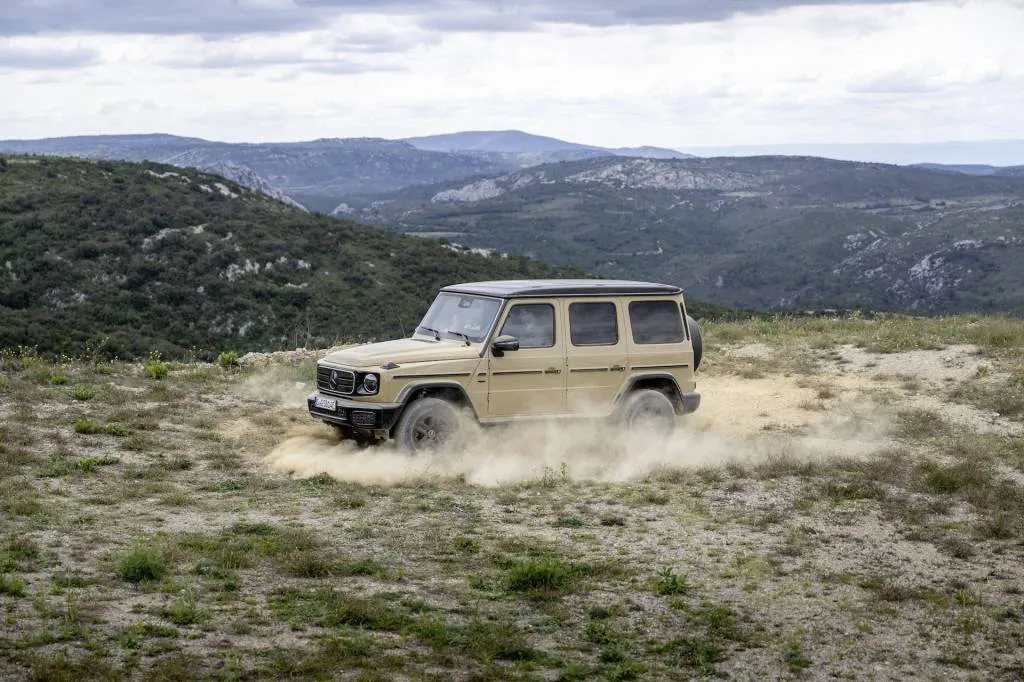
2025 Mercedes-Benz G 580 with EQ Technology electric SUV
G-Class with EQ Technology: Looks about right
About seven inches shorter than the 2024 model-year ICE G-Class, the G-Class EQ is otherwise very close in style. It sports a black-panel “grille,” a higher hood line, flares on the rear fenders that act as air curtains, and a rear roof spoiler.
Riding on a 113.8-inch wheelbase, at 182.0 inches long, 76.0 inches wide, and 78.2 inches tall, the G EQ ladles on the electronica among its usual power features, open-pore wood and leather trim, and ambient lighting. It lights up a 12.3-inch digital gauge cluster and a 12.3-inch touchscreen for infotainment, with standard Apple CarPlay and Android Auto. Standard safety features include adaptive cruise control, active lane control, active steering with blind-spot monitors, and automatic parking. Its available surround-view camera system generates stitched-together views that show the area directly around the vehicle for picking around trails. Burmester sound, twin 11.6-inch rear-seat displays, a dashcam, and a wireless charging pad are available, as are 20-inch wheels, running boards, and a package that lights the star logo, the model name, and the EQ badge.
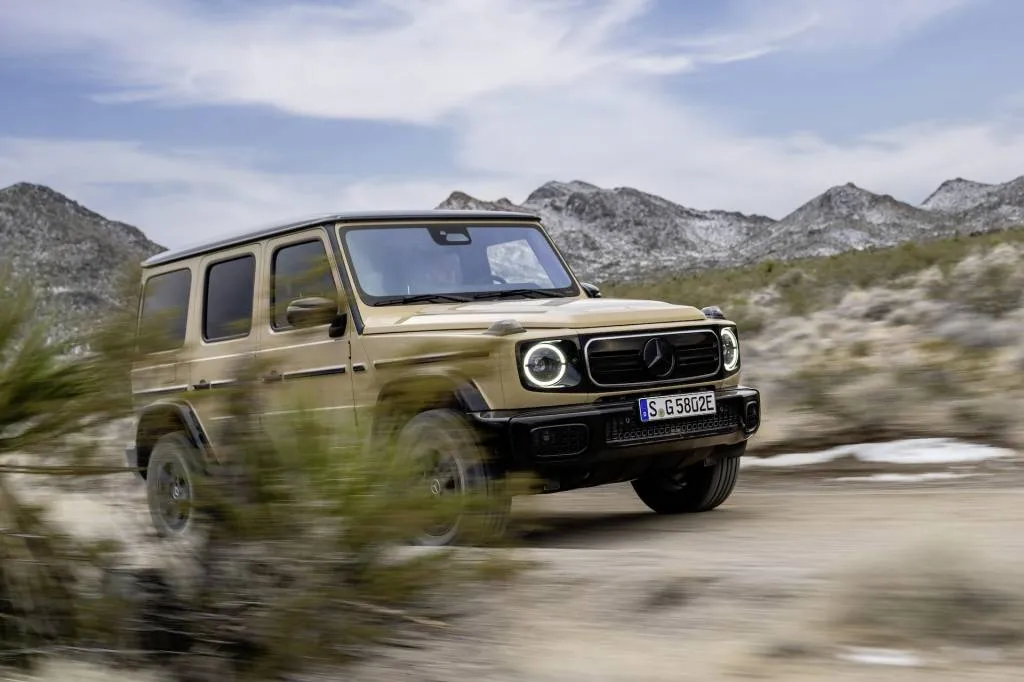
2025 Mercedes-Benz G 580 with EQ Technology
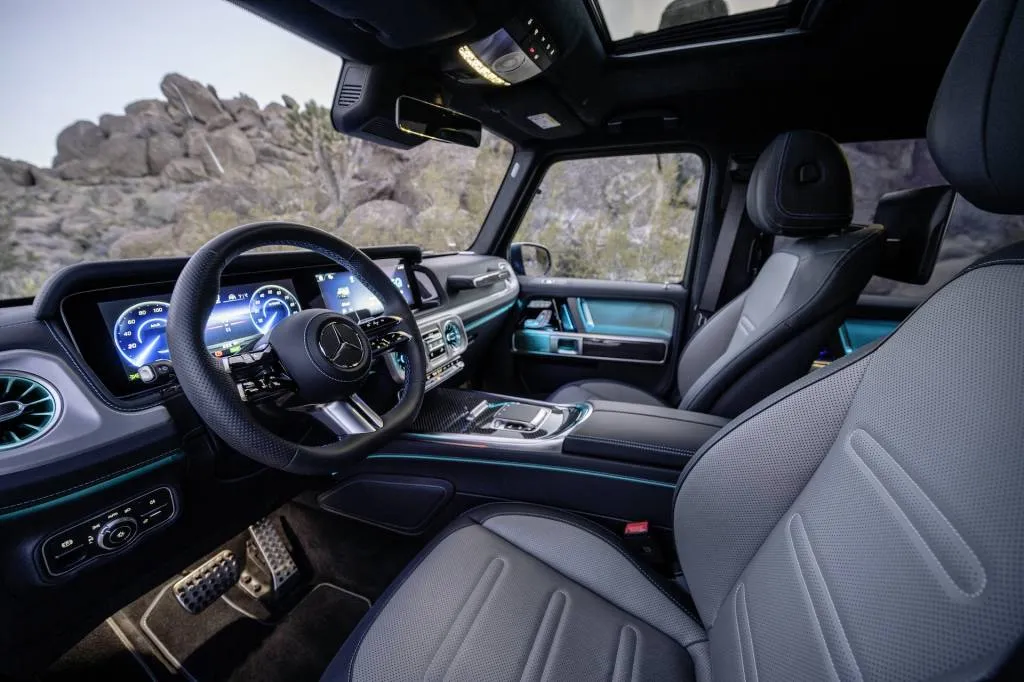
2025 Mercedes-Benz G 580 with EQ Technology
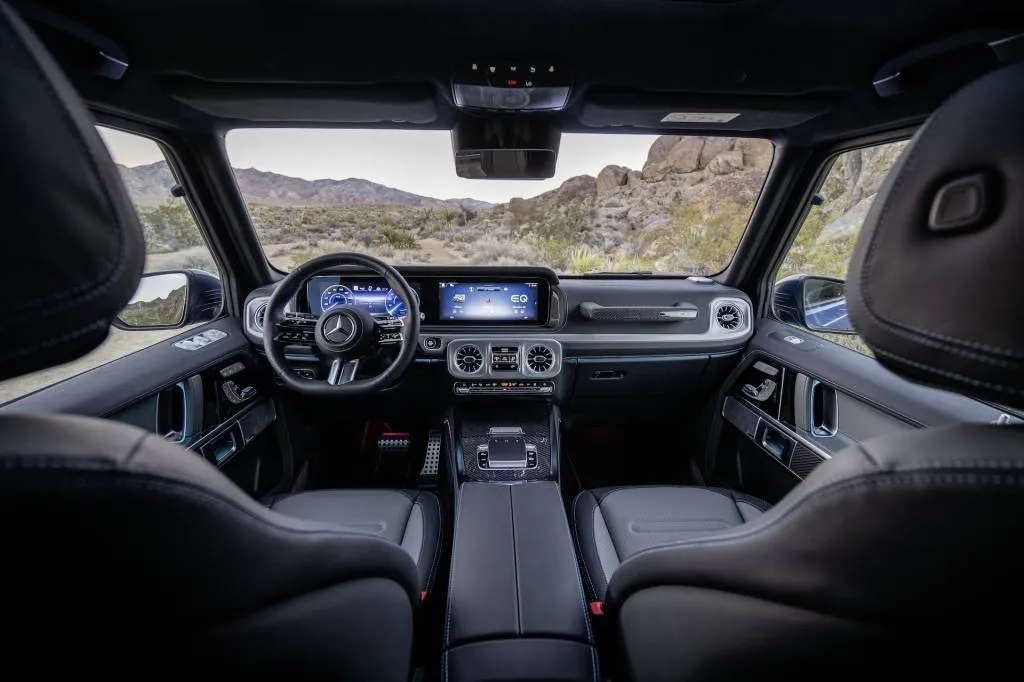
2025 Mercedes-Benz G 580 with EQ Technology
The electric G-Class arrives at dealers late this year. Prices have not been announced, but think big. In Euros, the standard G 580 with EQ Technology costs more than $150,000, and the Edition One costs more than $200,000. Even if you can’t buy one, find a good friend who can and take it for a spin. Two spins, when conditions permit.
—
NOTE: This story has been updated from a preview piece to one with dynamic on- and off-road driving impressions.
Mercedes-Benz paid for travel expenses so that we could spin ourselves silly in the G 580 and get our New Balances stuck in muck.

VW ID.Buzz features, Supercharger network growth, Vinfast and Sony: Today’s Car News
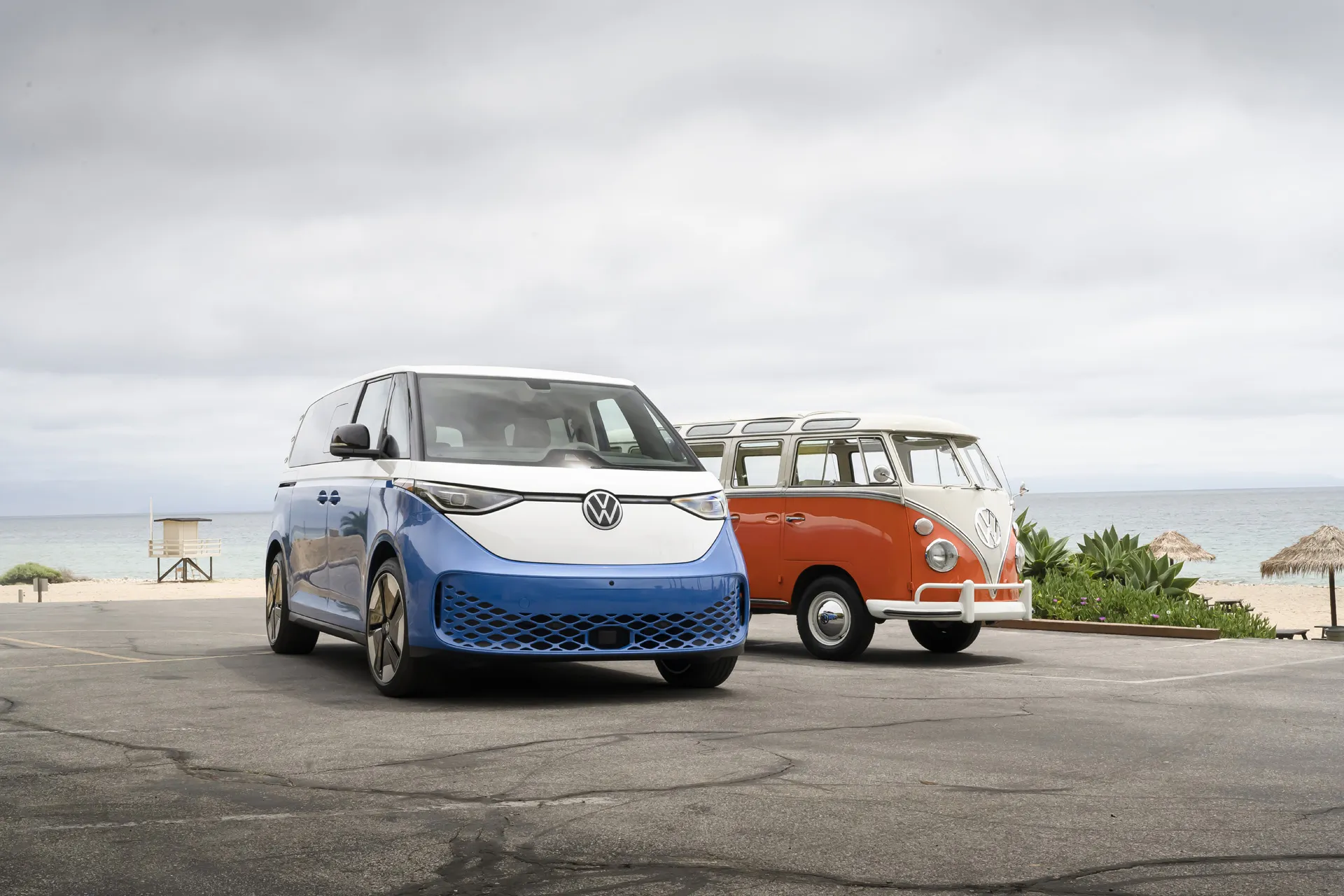
The Tesla Supercharger network is set to grow, even though the EV maker fired most of the people making its expansion possible. Vinfast debuts a new Sony entertainment interface. And VW gets a little more specific about how its ID.Buzz vans will be sold in the U.S.—but there’s still no price tag. This and more, here at Green Car Reports.
Volkswagen has confirmed standard features and trim levels for its U.S.-bound 2025 VW ID.Buzz electric vans, but pricing and EPA range might remain months away, closer to when these models are expected to arrive for first deliveries. Expect colors and interior trims for the longer three-row ID.Buzz versions that America gets.
Tesla’s Supercharger network is set to grow by “thousands” of chargers in 2024, attested CEO Elon Musk, despite a recent round of layoffs that essentially purged the entire division behind the highly successful charging network. It will spend “well over” $500 million on its Supercharger network this year, he said in a post on X, with that investment independent of operating costs.
And the world debut of Sony’s new in-vehicle entertainment app is in the Vinfast VF 8 electric SUV, the Vietnamese automaker announced Friday. Vinfast will initially offer the feature, called Ridevu, as complimentary, including a library of movies, and streaming to other passenger devices. The interface serves as an early preview of what’s in store in Sony’s upcoming Afeela EV conceived with Honda.
_________________________________

First Shift: Toyota’s battery complex preps for next year’s production
• Toyota’s battery complex preps for next year’s production
• NHTSA probes 200,000 Ford Super Duty trucks

VW reveals more US ID.Buzz feature details—no pricing yet
Volkswagen has confirmed feature, trim, and color combinations for the upcoming 2025 ID.Buzz in its long-awaited U.S. specification.
The ID.Buzz will initially arrive for the U.S. in a launch-only 1st Edition version, VW confirmed, plus two other trims: Pro S and Pro S Plus.
Pricing of the U.S. version won’t be announced until close to its launch, according to VW. It had previously targeted the U.S. version for first deliveries in June or July 2024, although VW of America has more recently suggested it won’t arrive until later in the year. If it’s any indication, VW still doesn’t appear to have a live online U.S. build tool, allowing customers to visualize its different American proportions and build combinations.
As VW revealed with 2025 VW ID.Buzz specs nearly nearly a year ago, U.S. versions of the ID.Buzz will ride on a nearly 10-inch-longer wheelbase than the two-row model that won’t be sold in the U.S. Set to have a 91-kwh battery pack, the U.S. ID.Buzz will come with a single-motor electric powertrain for now, and it gets the 282-hp unit from the 2025 VW ID.4. A dual-motor version with 335 hp (also the same as the ID.4) is on the way. VW confirms the U.S. version will be able to tow with an available retractable tow hitch, but it hasn’t yet confirmed ratings.
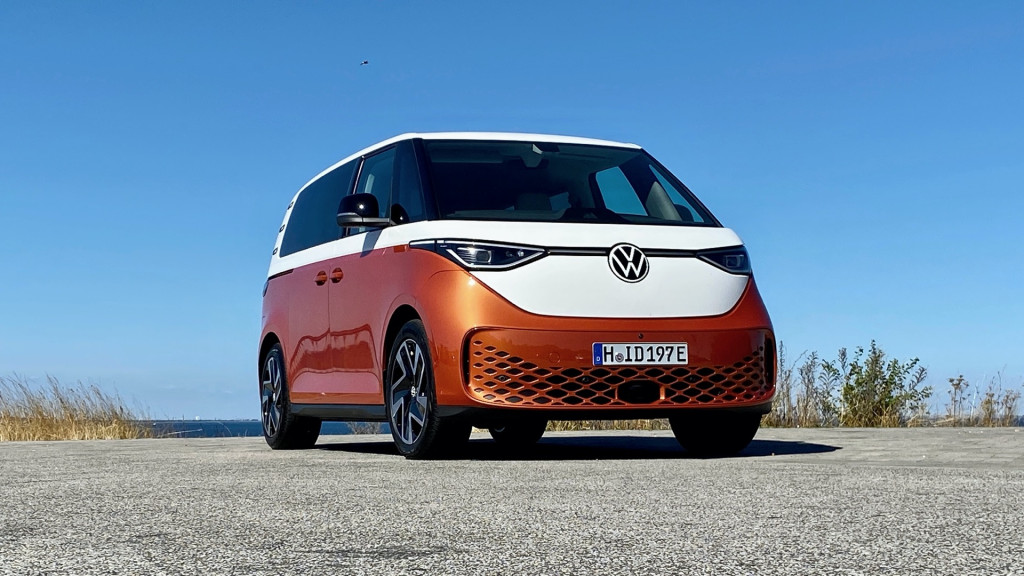
Volkswagen ID.Buzz (Euro spec)
In a review of the ID.Buzz EV in standard-wheelbase form two years ago (a version for Europe and other markets), Green Car Reports saw it as a great family vehicle in the tradition of a minivan, carrying over some of the excellent ride-and-handling traits of the VW ID.4 with which it shares MEB underpinnings.
In its launch-only 1st Edition, which builds on the Pro S trim, the ID.4 gets a two-tone exterior with a unique 20-inch wheel design, roof rail cross bars, a “coastal-inspired interior” with a panoramic roof, a 700-watt premium sound system, power-sliding doors, and a power tailgate.
The base Pro S will get 20-inch wheels, a parking-assistance system, 30-color ambient lighting, and the bigger, much-improved 12.9-inch infotainment system now given to most of the ID.4 lineup.
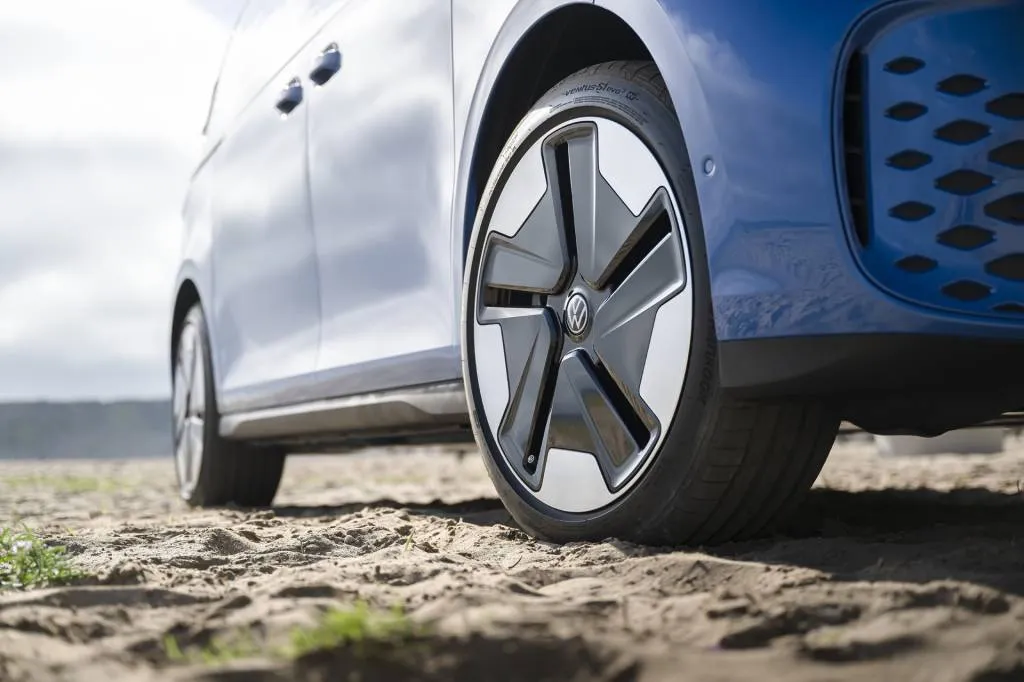
2025 Volkswagen ID.Buzz
The key differentiator for the extended-length U.S. version is its second-row bench seat, allowing space for up to seven. Pro S Plus versions get bench seating as standard in single-motor form, but a captain’s chair package—dropping capacity to six—can be added. The captain’s chair layout is included on Pro S Plus and 1st Edition versions, and will come standard with all-wheel drive.
Despite the delay to repackage this vehicle for the American market and add three-row seating, none of the ID.Buzz versions offer completely flat-folding seats, underscoring an issue with skateboard-layout electric vans and their underfloor space that’s occupied by the battery pack. Included on the 1st Edition and optional on the Pro S Plus is a Flexboard system that adds two fabric storage bins and “creates a flat floor when the seats are folded”—by laying an elevated panel through to the hatch, at the level of the folded second row. The third row can be removed completely, though, and the second row slides fore and aft 7.9 inches.
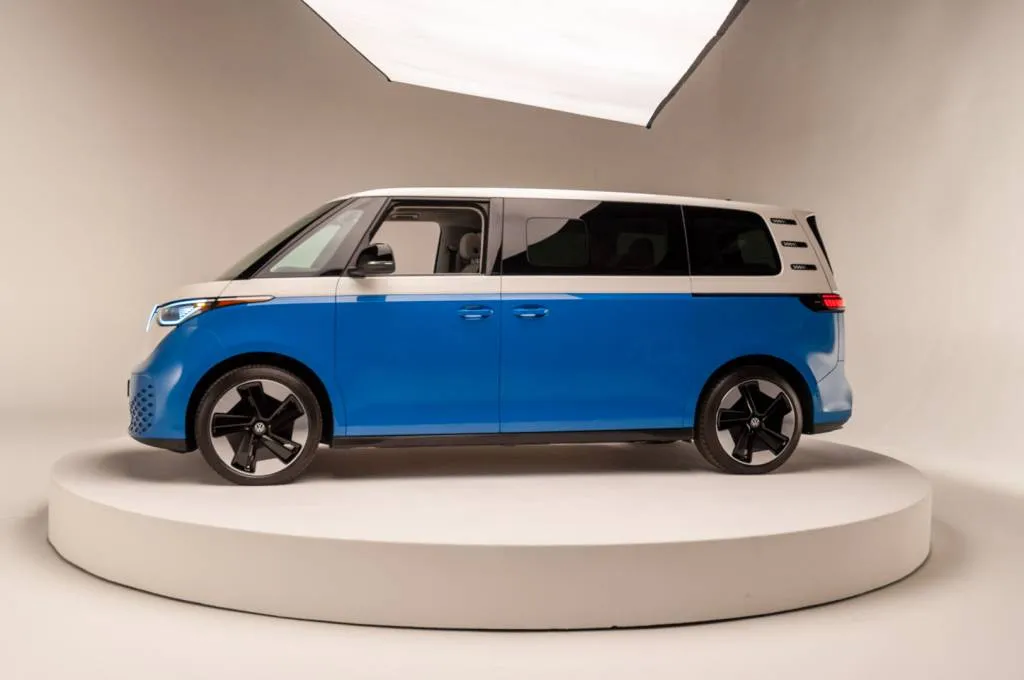
2025 Volkswagen ID.Buzz
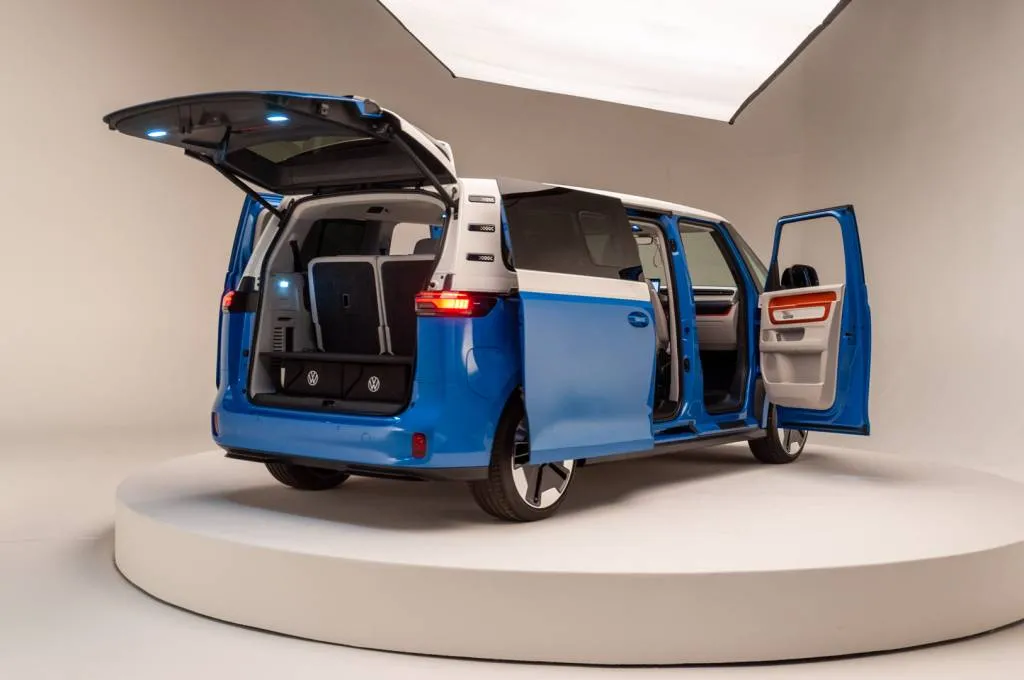
2025 Volkswagen ID.Buzz
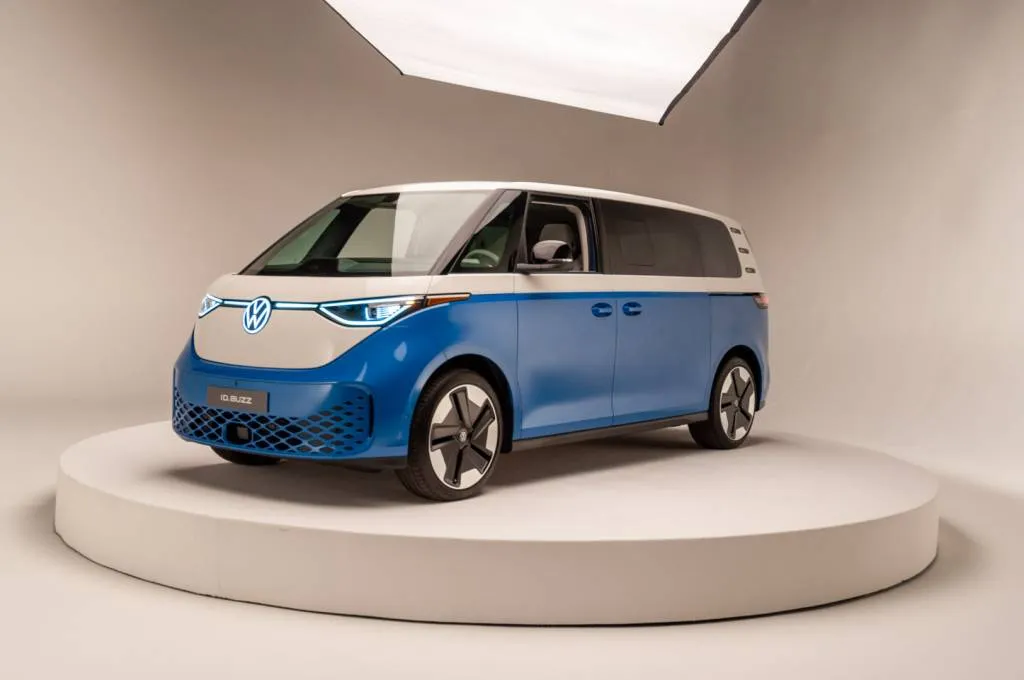
2025 Volkswagen ID.Buzz
The Volkswagen ID.Buzz is a modern electric-van incarnation of the VW Microbus, and it’s been a long time coming. That’s especially the case for Americans, which perhaps had the strongest connection to the original Microbus via car culture.
VW decided that Americans didn’t want the version of the ID.Buzz that’s 185.5 inches long, or about the same overall parking footprint as the bestselling Tesla Model Y, riding on a wheelbase about four inches longer. In its U.S.-bound XL form, the ID.Buzz is 192.4 inches long, 77.9 inches wide, and 74.6 inches tall, and it has a 127.5-inch wheelbase. It will also get a huge panoramic glass sunroof, measuring 67.4 inches long by 40.8 inches wide, with electrochromic tinting.
VW is putting a big emphasis on color combinations inside and out for the ID.Buzz, and they’ll be different in U.S. versions. On the outside that includes bright white two-tone combos with orange, yellow, green, blue, and more, while single-color options are limited to silver, white, and pearl. Inside, the American version of the ID.Buzz will also get unique color combinations, including synthetic-leather seats in shades of brown and gray, a wood look for some of the trim, and various piping shades, with one of the combinations, Copper, said to channel “mid-century modern vibes.”
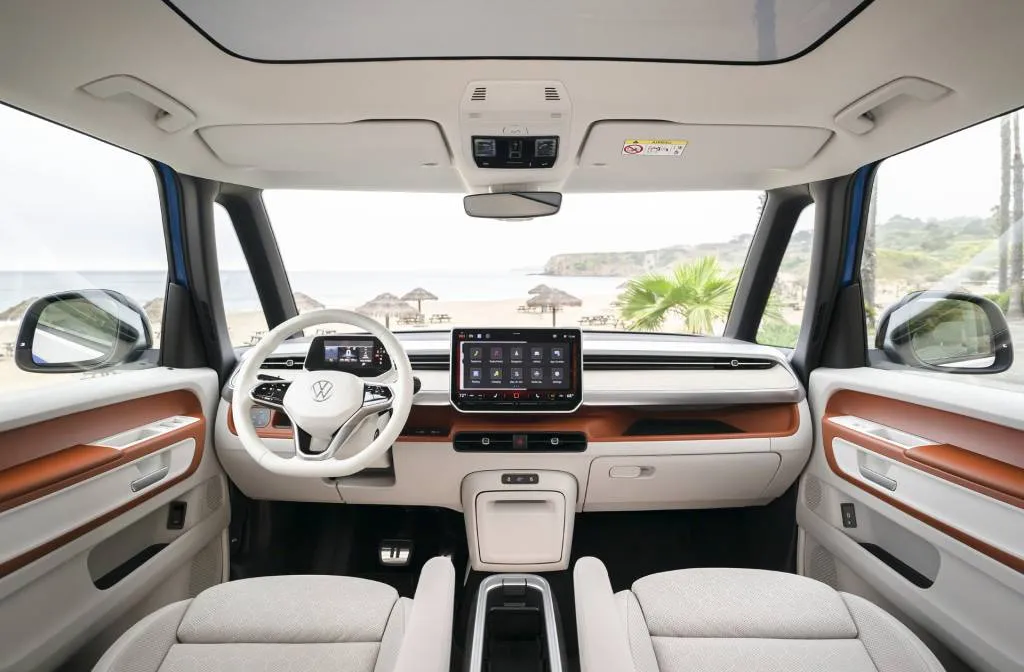
2025 Volkswagen ID.Buzz
Remarkable cabin trim and luxury features were never part of the original positioning of VW’s Microbus. Nor was a mid-century design aesthetic. So with VW mixing its messages on the Buzz, and building a product that’s a modern take on childhood nostalgia at this point, it remains to be seen whether this now much bigger product connects with Americans.
